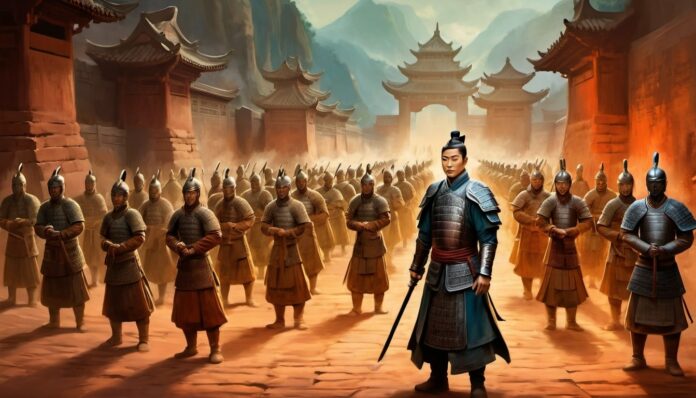Sometimes, certain archaeological discoveries seriously change the course of history. That’s why historians treat such discoveries with such reverence. Today, we will tell you about the Terracotta Army.
In the 1970s, during archaeological excavations in China, the clay Terracotta Army of Emperor Qin Shi Huang was discovered. This find immediately became a sensation worldwide, so it’s no wonder some called it the 8th wonder of the world.
To this day, the Terracotta Army is one of China’s main attractions, alongside the Great Wall of China.
Army of Emperor Qin Shi Huang
In 1974, not far from the city of Xi’an, the Terracotta Army made of clay was discovered. It was located next to the tomb of the emperor, and according to the beliefs of ancient Chinese people, it was supposed to guard him in the afterlife.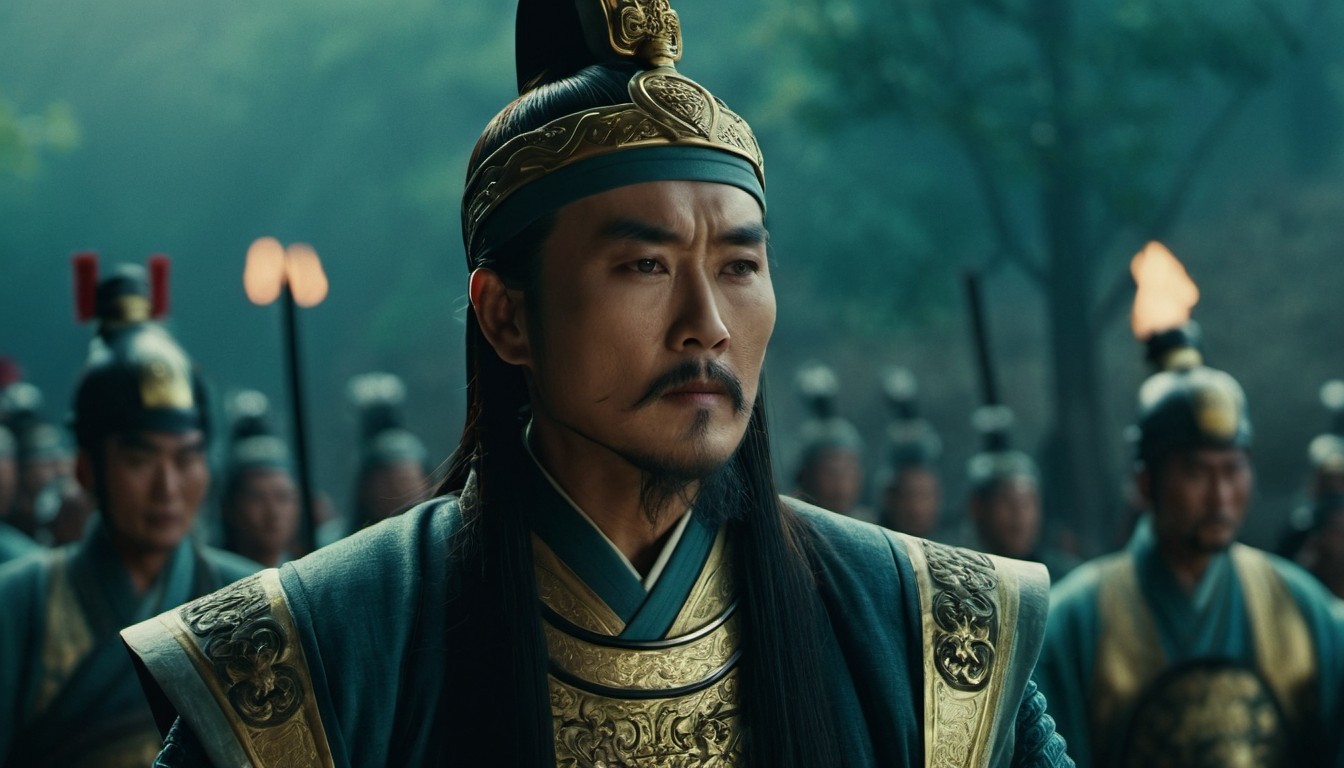
Interestingly, the Terracotta Army consisted of about 8,100 clay warriors and horses, made to life-size. In addition to the terracotta sculptures, tens of thousands of pieces of bronze weapons were also found.
The clay army was buried together with Emperor Qin Shi Huang in 210 BCE. In addition to these figures, archaeologists found the remains of 70,000 laborers with their families, as well as the bodies of 48 concubines of the emperor.
Examination showed that all these people were buried alive. Most likely, this was done to conceal the secret of creating this army.
Creation
The terracotta statues were buried together with the first emperor of the Qin dynasty – Qin Shi Huang (who unified China and connected all parts of the Great Wall) in 210-209 BCE.
Simayan (a descendant historian of the Han dynasty) reports that a year after ascending the throne in 246 BCE, the 13-year-old Ying Zheng (future Qin Shi Huang) began building his tomb.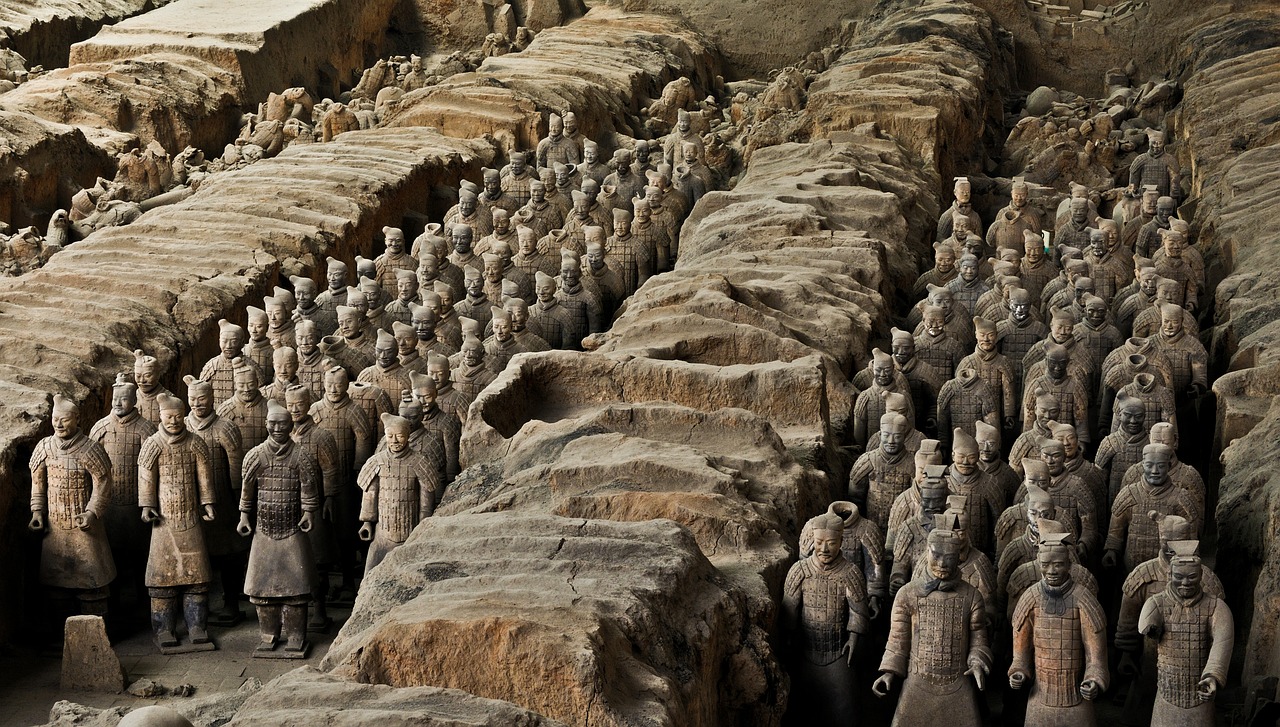
According to his plan, the statues were supposed to accompany him after death, and probably provide him with the opportunity to satisfy his power ambitions in the afterlife just as he did during his lifetime.
Construction of the mausoleum required the efforts of more than 700,000 workers and craftsmen and lasted 38 years. The perimeter of the external burial wall is 6 km.
Although instead of living warriors, contrary to tradition, clay copies of them were buried with the emperor, up to 70,000 workers with their families were also buried, according to various estimates.
Discovery
The statues were discovered in March 1974 by local peasants during drilling of an artesian well east of Mount Lishan. Mount Lishan is an artificial necropolis of the first emperor of Qin. The material for some of the statues was taken from this mountain.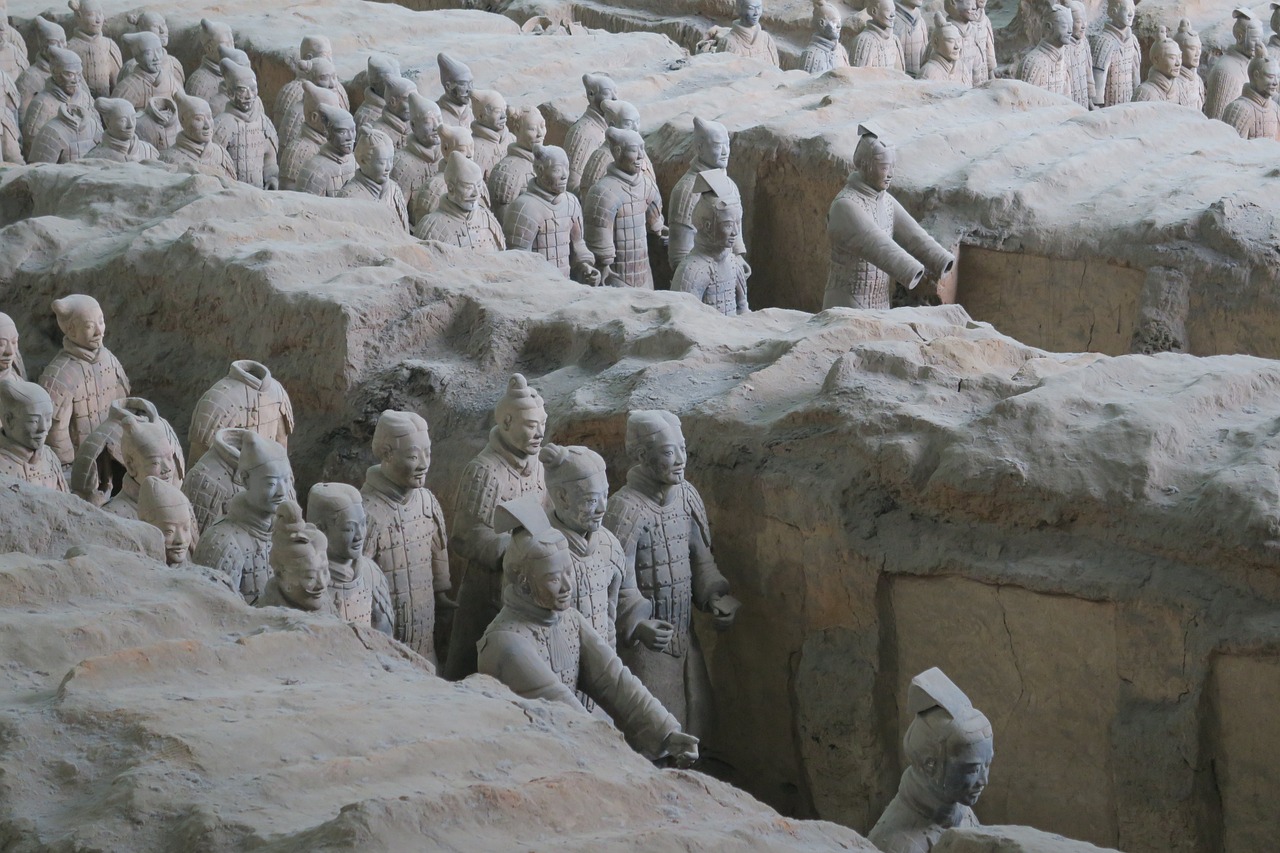
The first stage of excavations took place from 1978 to 1984. The second stage was from 1985 to 1986.
Statues extracted from the excavation and assembled in parts
On June 13, 2009, the third stage of excavations began. The army of clay warriors rests in battle formation in parallel vaults 1.5 km east of the emperor’s tomb.
All these vaults were found at a depth of 4 to 8 m. It is striking that all the statues are unique, meaning each figure has its own shape, equipment, and face. Among these warriors are infantrymen, archers, cavalrymen, and commanders.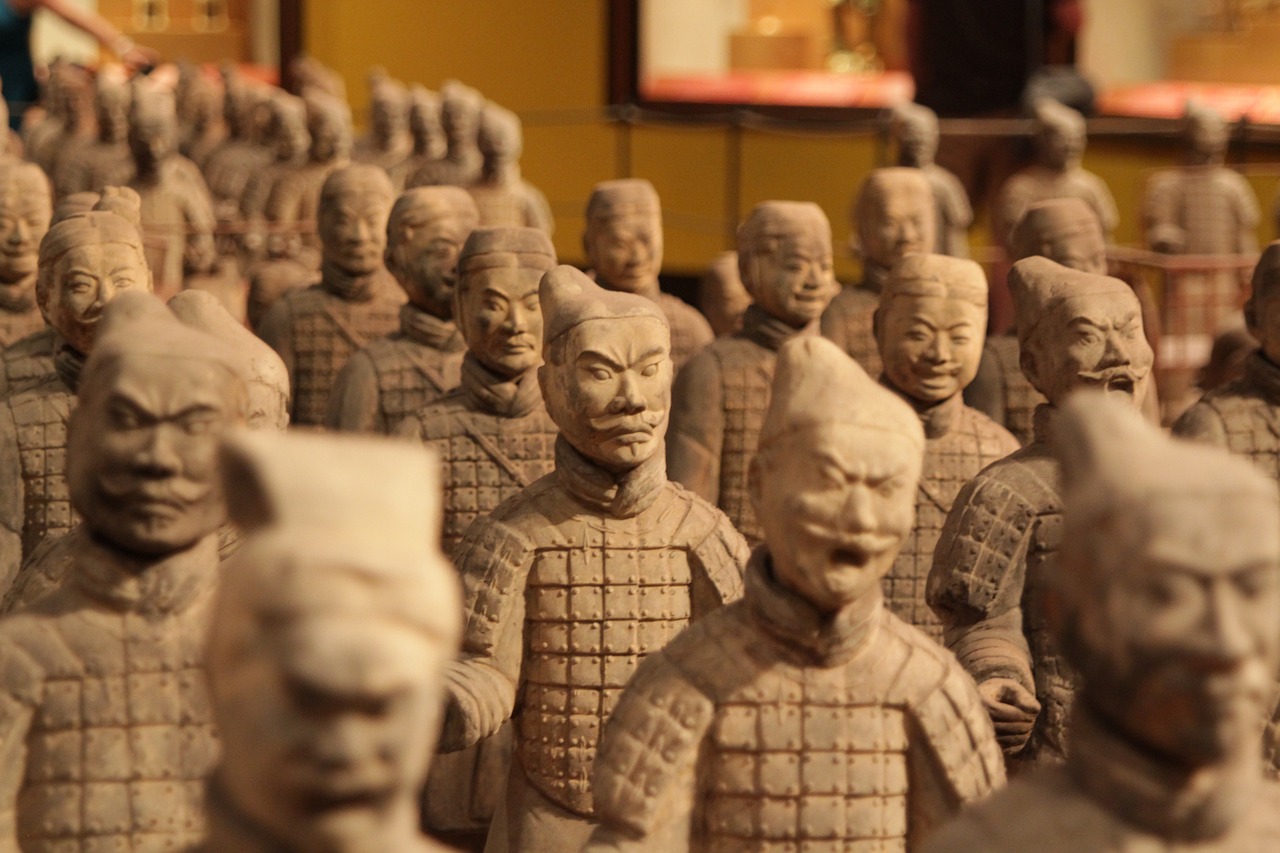
In relative proximity to the burial site, archaeologists discovered statues of musicians, acrobats, and statesmen.
Experts from China have determined that some of the figures, as well as horses and chariots, were made of clay. But with the rest of the warriors, things are much more complicated. It is still unknown where they were brought from. Each human statue weighs about 130 kg.
Even today, scientists are puzzled about how these statues were made. It is clear that initially the figures were given a certain form, and then they were fired. But how?
The thing is that archaeologists did not find a single kiln nearby. And it’s not surprising, because at that time people did not have such advanced technologies necessary for making such sculptures. Additionally, each statue is covered with a special glaze and painted with paint. Incredibly, but true
There is another equally interesting mystery: why has the weaponry not faded or dulled in over 2000 years? Examination showed that chromium is present in all metal objects.
Every statue is unique
But how could it be there if it was only learned to be manufactured at the beginning of the 20th century? Did ancient Chinese people possess such advanced technologies? And yet all the units of the weapons are made to the highest standard.
Among the most remarkable finds associated with the terracotta army are two bronze chariots found near the mausoleum.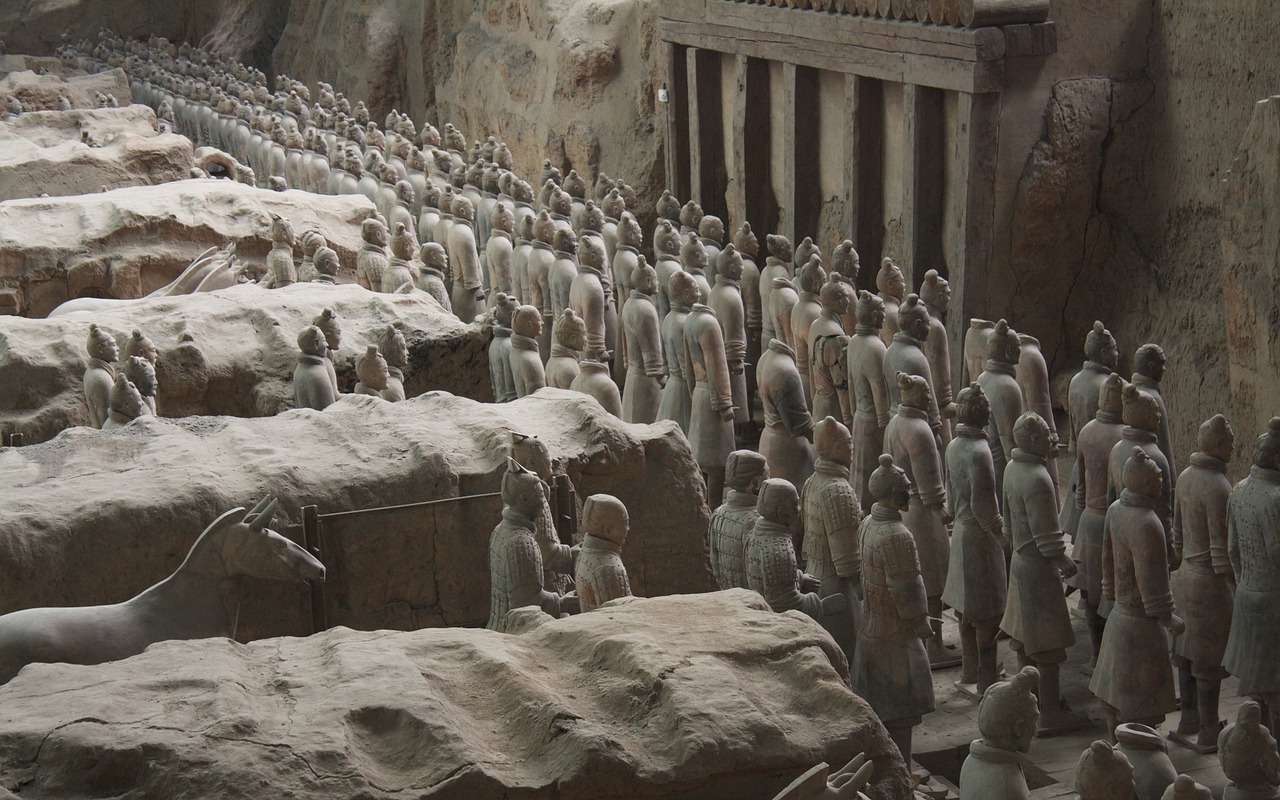
They are pulled by teams of beautiful horses, which obviously were intended for the emperor’s equestrian rides in the afterlife.
In addition to bronze, some details are made of silver and gold. Among all the artifacts discovered in China throughout history, these chariots are the most magnificent.
Shortly after the emperor’s death, a fire broke out in the tomb, resulting in its looting. According to ancient chronicles, it contained a large number of jewelry, coins, and other treasures.
Some historians believe that this tomb was just a decoy, and the true burial place of Qin Shi Huangdi has not yet been found. As for the Terracotta Army itself, it was eventually buried by soil.
Overall, the Terracotta Army can be considered the Eighth Wonder of the World. The sheer quantity of artifacts found is impressive, not to mention how precisely they are crafted.
Popularity and Significance
In 1987, during the 11th session of UNESCO, the Terracotta Army was included in the list of world heritage sites as part of the “Tomb of the First Emperor of the Qin Dynasty” complex. This complex became the first of the Chinese sites to be included in this list. Visiting the Terracotta Army is often part of the itinerary for foreign heads of state visiting China.
In 1984, the exhibition was visited by President Ronald Reagan of the United States with his wife. He regarded this historical monument as a “great wonder belonging to humanity.” In 1986, Queen Elizabeth II of the United Kingdom visited with Prince Philip. In 1998, the monument was visited by President Bill Clinton of the United States with his family, and in 2004, by President Vladimir Putin of Russia.
The Terracotta Army Today
Excavations of the Terracotta Army have not been completely halted to this day, as the authorities in China are doing everything possible to uncover and preserve the legacy of their ancestors. However, excavations are not currently being conducted on an official level.
The reason for the suspension of archaeological research is that according to legend, in the afterlife, the emperor should be accompanied by rivers of mercury. Just in case, scientists decided to check this version to avoid any unpleasant surprises. It is very possible that there are still many interesting and astonishing artifacts hidden underground. Therefore, we may expect even more new and amazing discoveries in the future.
